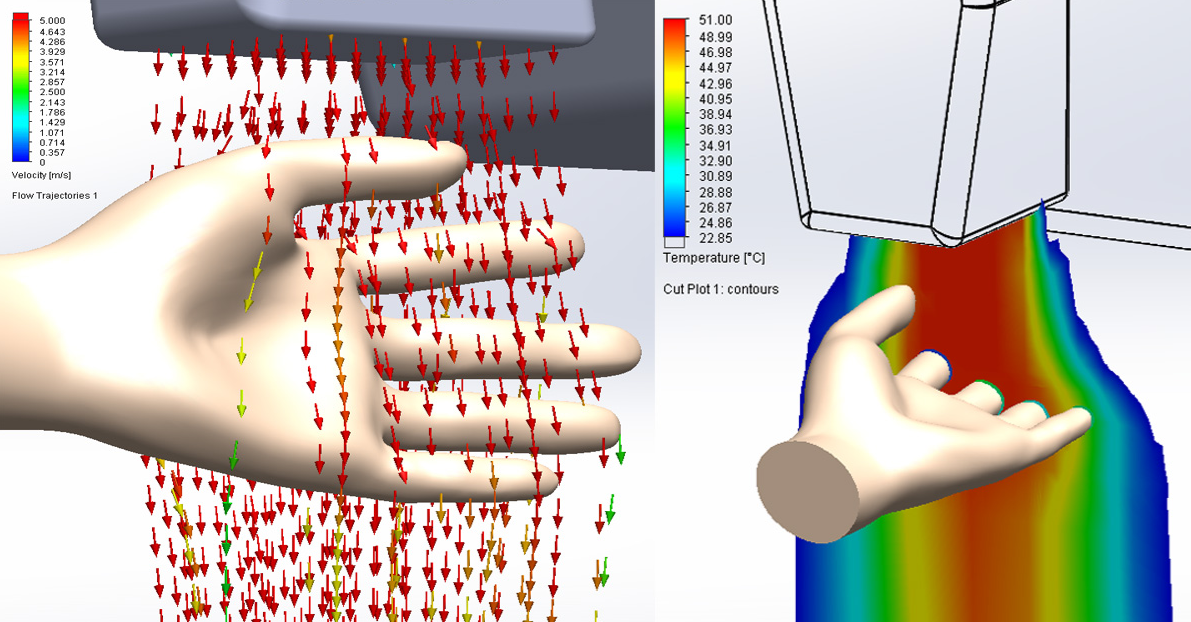The Efficient Hand Drying: Simcenter FLOEFD Insights
In the quest to determine the most efficient hand-drying method, the question of 'What's the Fastest Way to Dry Your Hands?' is a common conundrum, as Robin Bornoff explains. Robin, not renowned for having large hands, occasionally ponders the optimal technique while stationed beneath a convective hand dryer in public or office restrooms (after all, who installs these contraptions at home?).
As Robin Bonroff said, he often wonders about the right approach: Should one rotate their hands, keep them in a fixed position, and if so, which orientation? It's a skill that seems curiously absent from the school curriculum, leaving us all wishing for the convenience of paper towels.
To answer the age-old question of the quickest way to dry hands in such a scenario, we turn to Simcenter FLOEFD, a remarkable MCAD-embedded CFD (computational fluid dynamics) tool.
To address this query properly, it's essential to deconstruct the concept of "dry hands." As Robin Bonroff pointed out, in the context of hand drying, a hand can be considered dry when it sheds 90% of the initial water adhering to the skin. Simcenter FLOEFD boasts a handy 'water film' feature that allows simulation of the water on a surface, including transient effects like evaporation and condensation. When conducting a transient simulation, it's crucial to set the initial condition for the thickness of the water film when the drying process begins. Robin chose 25 microns, although references suggest that a water film thickness of up to 100 microns may be present on hands after they've been submerged and withdrawn from water, making it prudent to shake off any excess water before commencing the drying process.
Robin's modeling efforts involved a single hand placed in ten different orientations, tracking the reduction in water film mass over time when exposed to a hot convective airflow.
The graph below displays the relative reduction in water film mass for these orientations, along with a comparison of the drying rate when the hand is rotated:
Remarkably, the hand dries fastest when held in a vertical orientation (Design Point 10). In this position, both sides of the wet hand benefit from the hot air stream, efficiently drying the hand in record time. Conversely, the slowest drying occurs when the hand is nearly horizontal (Design Point 7), taking about 20% longer to reach the desired dry condition. In this scenario, the back of the hand is shielded from the hot air, resulting in a prolonged drying process.
For a deeper understanding of the drying process, Robin Bonroff used animations to illustrate the reduction in water film thickness over time, with red representing a thick water film and blue indicating dry skin. Notably, the fingers dry first, benefiting from a substantial surface area directly exposed to the hot air stream, while the palm takes longer to dry.
Faster Drying Hand Orientation (to 90% reduction in surface water mass)
Surprisingly, Robin discovered that a rotating hand didn't offer the quickest drying time. Although it exposes more hand surface area to the hot air flow within a given time frame, the hand doesn't remain stationary long enough for the water film to heat up and expedite drying. While it may ultimately be the fastest method for achieving complete dryness, by that point, you could have already returned to the bar to enjoy your next beer.
So, the next time you find yourself drying your hands, heed Robin Bonroff's advice: keep your hands vertical, exercise patience, and take a moment to contemplate the environmental impact of your choice between an electric convective hand dryer and paper towels (if available).
Reach us today to know more about Simcenter FLOED!
Source: Robin Bornoff/Siemens Digital Industries Software



